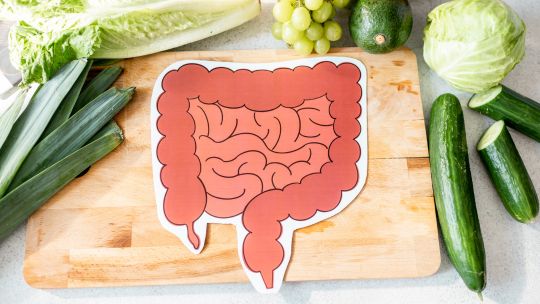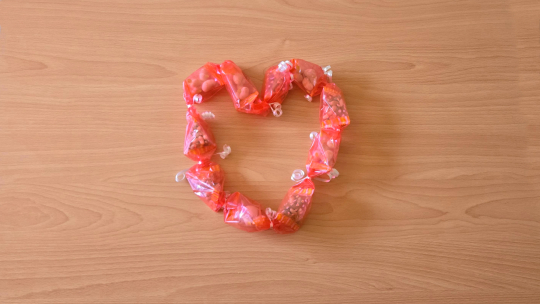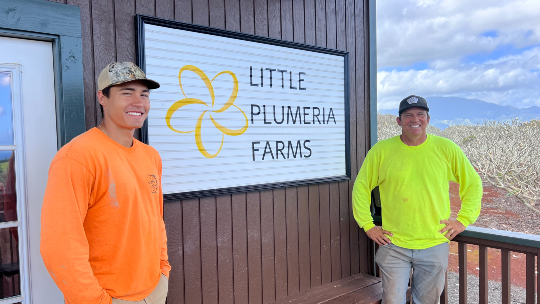North Kohala may be sparsely developed with acres of farmland, but it’s rich in Hawaiian history and culture. The quiet mountainous region of the Big Island is known as the birthplace of King Kamehameha I, as well as its ranching and farming culture.
David Fuertes and his wife, Carol, are building on North Kohala’s agricultural identity with their nonprofit. The couple formed Kahua Paa Mua Farm in 2010 to educate keiki and their families about food security and self-sustainability. Kids are learning how to grow traditional Hawaiian crops, raise chickens and pigs at home, and cultivate vegetables using aquaponics.
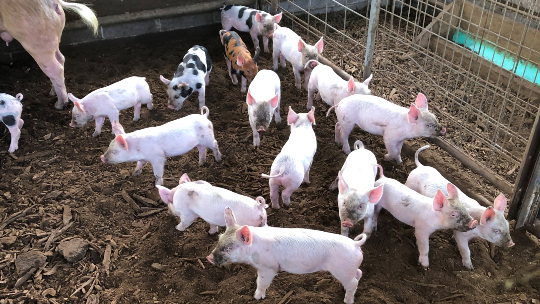
Keiki learn how to raise backyard pigs and chickens.
“It’s a backyard revolution,” says Fuertes, who’s affectionately called Papa by the children participating in the farm’s programs. “Our number-one belief is to take care of the aina and prepare it for the next generation.”
Aina-based education
Fuertes leads his mentorship program with a four-part mantra that helps keiki connect what they learn on the farm to daily living:
- Origin. If we know our origin, we can learn from our ancestors.
- Values. That’s the driving force to make decisions.
- Purpose. It will help you understand why you’re doing things.
- Destiny. Envision the ultimate for yourself and your lahui (people).
Kahua Paa Mua focuses on aina-based education, combining traditional agricultural methods with (Korean) Natural Farming, which focuses on using natural fertilizers to grow chemical-free crops.
“Farming is hard work, but we’re teaching kids the skills they need to be successful,” says Fuertes. “They’re putting in the effort of caring for our aina and seeing the results in produce that can help feed their families.”
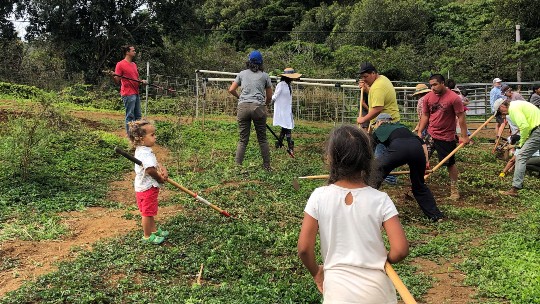
Families working together on the farm.
While the food goes home with the participants, it’s also shared with the community and other ohana. Families have grown and given away hundreds of pounds of cucumbers, bok choy, zucchini, lettuce, taro, and more.
“Twice a year, we take what we grow and make dinner for the needy,” says Fuertes. “With the hogs and cabbage raised on the farm, we recently made Kalua pork and kimchi and served 525 free dinners. It’s a way of giving back to the community.”
Incorporating Hawaiian culture
While much of the learning is done on the farm, Kahua Paa Mua has been branching out to schools across the state with the help of grants. Recently, the organization partnered with Kamehameha Schools, where students worked on an aina-based project that was connected to Hawaiian culture.
“Each school had a kupuna to mentor them on raising vegetables and animals, but with one step further,” says Fuertes. “For example, if they grew squash, they could use the gourds to make ipu for hula dancers.”
The project has a larger reach than Kamehameha students; students in schools across the state will see it. That’s because the assignment included a video lesson plan that connects to aina and culture.
“Any teacher in Hawaii can use it in their lesson plan,” explains Fuertes.
Future farmers
After 13 years in operation, Kahua Paa Mua remains committed to teaching young, future farmers the importance of food self-reliance, strengthening community resilience, and remembering cultural practices.
“What is culture without agriculture? We can’t exist without food and water,” says Fuertes. “We almost lost our culture in Hawaii and we can’t let that happen. This is what we believe: if you want food for a year, plant kalo or uala. If you want food for more than a year, plant a tree. But if you want to feed the community for a lifetime, invest in our children.”
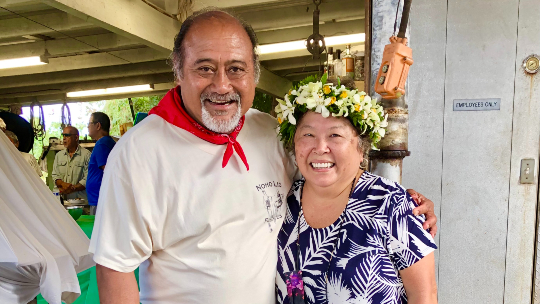
David and Carol Fuertes.
Read more about David and Carol in the winter 2024 issue of Island Scene.
Photos courtesy Kahua Paa Mua Farm

